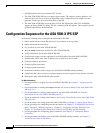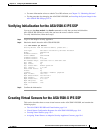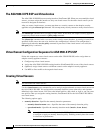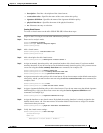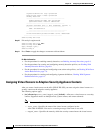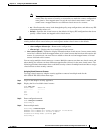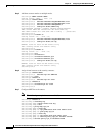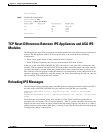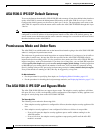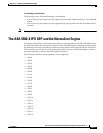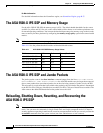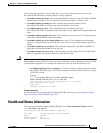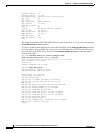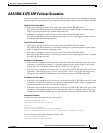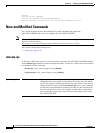
19-9
Cisco Intrusion Prevention System CLI Sensor Configuration Guide for IPS 7.1
OL-19892-01
Chapter 19 Configuring the ASA 5500-X IPS SSP
TCP Reset Differences Between IPS Appliances and ASA IPS Modules
asa/c3(config)#
Step 8 Confirm the configuration.
asa/c3(config)# exit
asa(config)# show ips detail
Sensor Name Sensor ID Allocated To Mapped Name
----------- --------- ------------ -----------
vs0 1 admin adminvs0
c3 c3vs0
vs1 2 c2 c2vs1
c3 c3vs1
asa(config)#
TCP Reset Differences Between IPS Appliances and ASA IPS
Modules
The IPS appliance sends TCP reset packets to both the attacker and victim when reset-tcp-connection is
selected. The IPS appliance sends a TCP reset packet only to the victim under the following
circumstances:
• When a deny-packet-inline or deny-connection-inline is selected
• When TCP-based signatures and reset-tcp-connection have NOT been selected
In the case of the ASA 5500-X IPS SSP, the TCP reset request is sent to the ASA, and then the ASA
sends the TCP reset packets. The ASA sends TCP reset packets to both the attacker and victim when the
reset-tcp-connection is selected. When deny-packet-inline or deny-connection-inline is selected, the
ASA sends the TCP reset packet to either the attacker or victim depending on the configuration of the
signature. Signatures configured to swap the attacker and victim when reporting the alert can cause the
ASA to send the TCP reset packet to the attacker.
Reloading IPS Messages
The following messages generated during some IPS signature and global correlation updates for IPS 7.1
and later on the ASA 5500-X IPS SSP can cause confusion since the IPS is not reloading:
ASA5585-SSP-IPS20 Module in slot 1, application up "IPS", version "7.1(1)E4" Normal
Operation
ASA5585-SSP-IPS20 Module in slot 1, application reloading "IPS", version "7.1(1)E4" Config
Change
These messages are generated during some, but not all, of the global correlation updates that are
attempted every five minutes. This is expected behavior. There is a global correlation check every five
minutes, but there may not be an update available, thus the message appears every hour or so. When a
global correlation update actually takes place, a message is sent from the IPS to the ASA indicating that
a configuration change is taking place.




